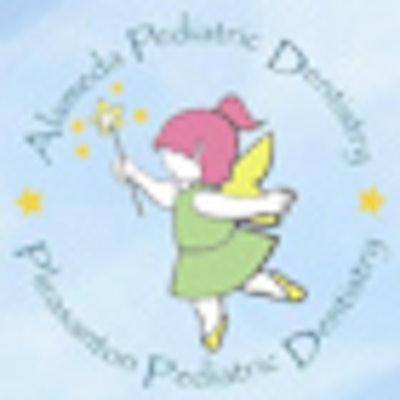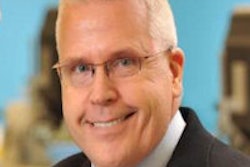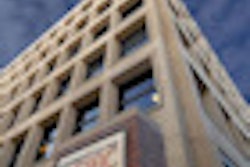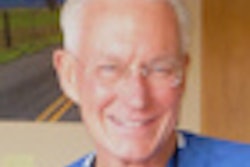
Welcome to "A Day in the Life Of ..." a new DrBicuspid.com series that profiles dental practices of all shapes and sizes to provide a peek into their daily operations: how they interact with patients, manage staff, make business and clinical decisions, handle emergencies -- in essence, all of the things, expected and otherwise, that occur in a dental office on a daily basis.
The young girl in the pink T-shirt and blue capris giggles each time the dental assistant tries to insert the digital x-ray sensor into her mouth.
"Hold still," her mother says from the doorway. "Stop wiggling."
"I want to watch the Wiggles!" squeals the girl, who looks to be 4 or 5. "I love, love, love the Wiggles!"
After the image is finally acquired, the girl is escorted into a nearby operatory to be prepped for a small composite filling. But the radiograph has revealed that the lesion is more extensive than first thought, so a crown is recommended to save the tooth.
More giggling ensues as Portia Weiman, RDH, the only hygienist in this 14-table pediatric dental practice, begins to administer nitrous oxide to calm the patient, all the while talking in a soothing voice using carefully selected words, such as "balloon medicine" for nitrous oxide, "raincoat" for the dental dam, and "pillow" for the mouth prop.
 The Tooth Fairy welcomes patients to Alameda Pediatric Dentistry, along with a basket of goodies to give away.
The Tooth Fairy welcomes patients to Alameda Pediatric Dentistry, along with a basket of goodies to give away.
When Weiman begins the injection, however, the girl's giggles turn to cries of pain. Weiman remains calm, reminding her to keep breathing through her nose, telling her "oh, there's another bug, we're going to get those bugs!" The patient's mother begins to sing what she calls her "silly" version of "Twinkle, Twinkle Little Star." It takes another minute or two, but the young girl finally calms down.
"Good job! You are such a big girl!" Weiman says. "You followed directions so well."
Meanwhile, in another corner of the practice, a three-year-old patient with significant decay who has been scheduled for oral sedation begins to cry and protest loudly, prompting the 12-year-old girl awaiting an extraction in a nearby operatory to glance nervously around the room and squeeze her mother's hand tightly.
"It's okay, honey," her mother says. "You'll be okay."
Meeting families' needs
It's all in a day's work at Alameda Pediatric Dentistry, a 40-year-old dental practice in this island suburb of San Francisco that cares for approximately 7,500 patients from age 0 through college graduation. The practice was founded in 1970 by Robert Oliver, DDS, and is currently owned and operated by David Perry, DDS, and Sharine Thenard, DDS. Together with two associates, 12 registered dental assistants (seven RDAs, four RDAEFs, and one RDAEF2), one dental hygienist, and other administrative and support staff, the practice sees up to 120 patients a day, five days a week.
“We try to be available when the children and parents want us.”
— Sharine Thenard, DDS, co-owner,
Alameda Pediatric Dentistry
Alameda Pediatric Dentistry -- and its affiliate, Pleasanton Pediatric Dentistry -- may not be family-owned and operated, but from the moment you walk through the door it sure feels like it. Many of the people who work there were born and raised in Alameda, including Dr. Thenard, and were patients there when they were kids. Weiman and the clinical director, Betty Rodriguez, RDAEF, have each worked there for 25 years. In fact, in addition to being a patient when she was younger, Weiman was Dr. Thenard's hygienist when the doctor was a teen.
The practice caters to busy Alameda families in a multitude of ways, starting with the hours. The office opens at 7:30 a.m., when everyone gathers for a 10-minute morning huddle. The first appointment is at 7:40 a.m., and most days the staff will be bustling until mid-morning. They break for lunch at noon and reassemble at 1:30 for another 10-minute huddle. Then it's back to the patients. When school lets out at 3 p.m., the pace picks up again -- along with the noise level, Dr. Thenard notes with a smile -- and stays that way until closing time.
"We try to be available when the children and parents want us, so we start earlier than most other practices and work until 5 p.m.," said Dr. Thenard. "We really want to serve the needs of our patients."
 Dr. Sharine Thenard was born and raised in Alameda and was a patient at Alameda Pediatric Dentistry. She earned her DDS at the University of California, San Francisco and joined the practice seven years ago.
Dr. Sharine Thenard was born and raised in Alameda and was a patient at Alameda Pediatric Dentistry. She earned her DDS at the University of California, San Francisco and joined the practice seven years ago.
Mornings are devoted to restorative and surgical procedures, afternoons to preventive care. For restorations they use only composites, no amalgam, and they also place crowns and caps when more extensive work is called for.
"When it's a baby tooth we do whatever we can to save the tooth, even a root canal, because when you remove a tooth and create that space, it creates other problems as the teeth develop," explains Nadira Sidi-Salah, RDA.
They do oral sedation cases one day a week and work with a board-certified pediatric anesthesiologist for in-office general anesthesia once a month. An oral surgeon also comes in once a month to do third molar extractions, and for special-needs patients, the doctors have staff privileges at Children's Hospital & Research Center Oakland.
Kid-friendly design
The office design is kid- and family-friendly as well. The practice began with three operatories but has expanded to 14, each equipped with specially designed tables that are lower to the ground, so young patients can climb up by themselves and lay down. On each table is a pair of sunglasses, which they immediately pick up and put on, usually with a smile.
The center of the office features a four-table open bay that is also intended to ease anxieties, according to Rodriguez. In one area, patients can sit on the floor and play a age-appropriate video game while waiting their turn; in another corner stands an old wooden playhouse filled with books and toys that has been part of the practice since it first opened.
"The kids can watch one another while they're being treated, which helps make the experience less scary," Rodriguez said.
There are also nine individual operatories and a two-table "family room" designed to enable siblings to be treated at the same time, in the same room, with their parents and even younger brothers or sisters present.
"This is our first time in here -- I love it!" says one mom with two young daughters getting cleanings and varnish. "I'm spoiled now."
Throughout the practice the white walls are adorned with bright and friendly images -- a sunburst, trees, flowers, birds, butterflies, sea creatures, the Tooth Fairy -- and several feature LCD TVs suspended above the treatment tables for patients to watch videos during their procedures.

Each treatment area also has its own chairside computer and flat-panel display. The entire practice is digital, although not paperless -- at least not yet. The staff uses EagleSoft in both the front and back offices, including for charting and x-ray review. But they also still use paper charts.
"When working on a patient we use the paper chart in conjunction with the digital," Rodriguez explains. "That way we can look at the treatment plan (on the paper chart) while also referring to the digital images on the screen. If we only had digital, we'd need two monitors, which isn't practical in the operatory."
There are two x-ray areas, both equipped with Schick systems for panos and bitewings. They use a DigiDoc intraoral camera that wirelessly transmits the images into the computer network for review, and a Nomad portable x-ray camera for special cases. For intraoffice communication, each staff member wears a walkie-talkie, complete with microphone and headset, that operates via an internal network.
Building trust is key
From the office design to the warm and friendly staff, Alameda Pediatric Dentistry's goal is to create an environment that eases anxieties, minimizes disruptions, and builds trust, Dr. Thenard emphasizes.
"It is different in a lot of ways from a general dentist's office," she says. "You're not just working with the child but with the parent, too."
Time is of the essence with pediatric patients, she added, and good teamwork is essential.
On this sunny Tuesday in May, for example, Weiman and Amanda Porter, RDA, are prepping five-year-old Isabella -- whose mom was once a patient here, too -- for four fillings.
Weiman speaks gently and calmly to the girl, instructing her to "take a breath when you smell the flowers" (nitrous) and explaining the "raincoat" and the "tooth chair."
"We really take the time to make the patient comfortable," Rodriguez says. "Eye contact is very important. And you have to be honest, but careful with the words you use."
Once Isabella is ready, Dr. Thenard sits down and begins the procedure, with two RDAs at her side -- "six-handed dentistry," explains Rodriguez: two assistants in addition to the doctor, with one focused exclusively on behavior management.
"With nitrous you only have a certain window of time," Rodriguez says. "You can't stop a procedure once you open up a tooth."
Throughout the procedure, Dr. Thenard explains in simple terms what she is doing. Isabella is so engrossed in the video on the screen suspended from the ceiling she barely moves or seems bothered by the whir of the handpiece or suction. When the doctor finishes, she compliments Isabella on what a great job she did. The youngster smiles shyly and whispers "Thank you."
While the challenges of pediatric dentistry may be many, so are the rewards, Dr. Thenard emphasizes as she prepares for the next patient.
"Dental caries is so prevalent," she says. "We would love to see it go away, but we still see it every day, sometimes in patients as young as 2. So the challenge is getting the word out that we want to see kids by age 1 because sometimes even at 1 1/2 it is too late."
At the end of the day, it's all about the kids, she adds with a smile.
"They are so candid and so fun to be around, and they say the funniest things," she says. "The job is very challenging, but when I get hugs and pictures and smiles and giggles, it makes it all worthwhile."



















